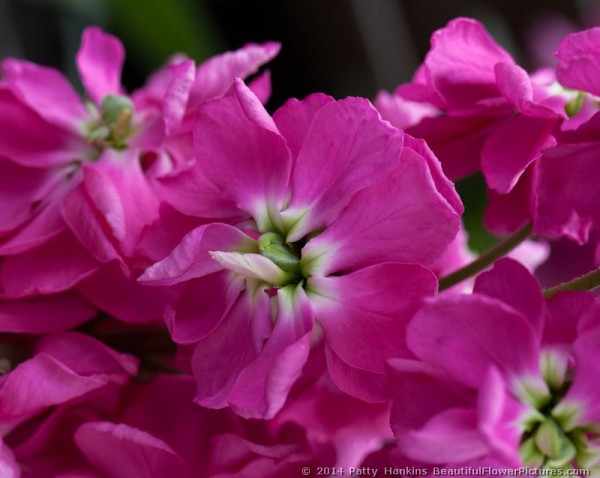
by hankinslawrenceimages | Jan 14, 2014 | Brassicaceae Family, Flowers
One of the flowers I’ve photographed a couple of times is Stock (matthiola incana) which supposedly is a common garden flower – but I’ve only seen it at a couple of botanical gardens and don’t ever remember seeing it available at local garden centers.
Stock (also known as hoary stock and tenweeks stock) are heavily scented members of the Brassicaceae (Mustard) family. Depending on the variety – some are annuals – other are ebiennials. The plants grow to about 18″ tall with an abundance of blossoms.
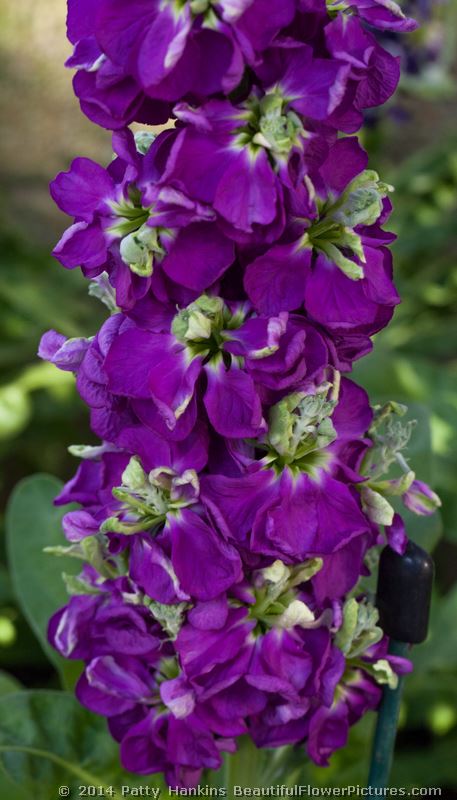
Opera Daphene Stock © 2014 Patty Hankins
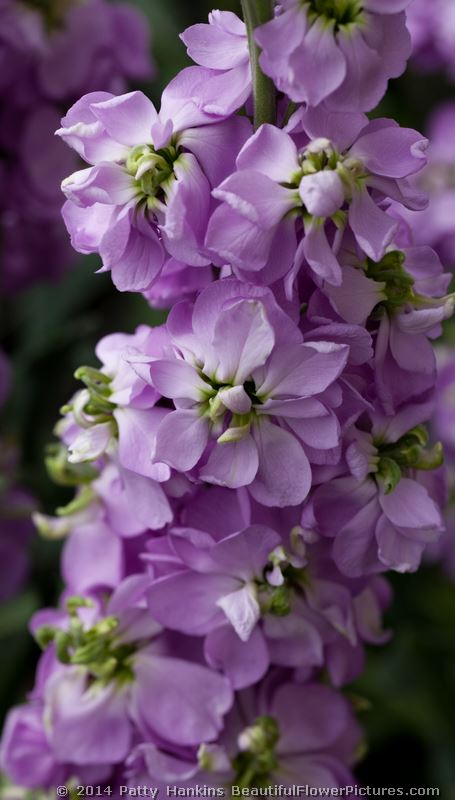
Katz Lavender White Stock © 2014 Patty Hankins
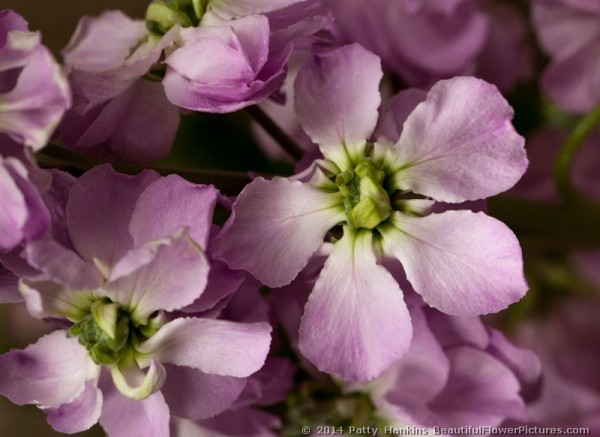
Figaro Light Rose Stock © 2014 Patty Hankins
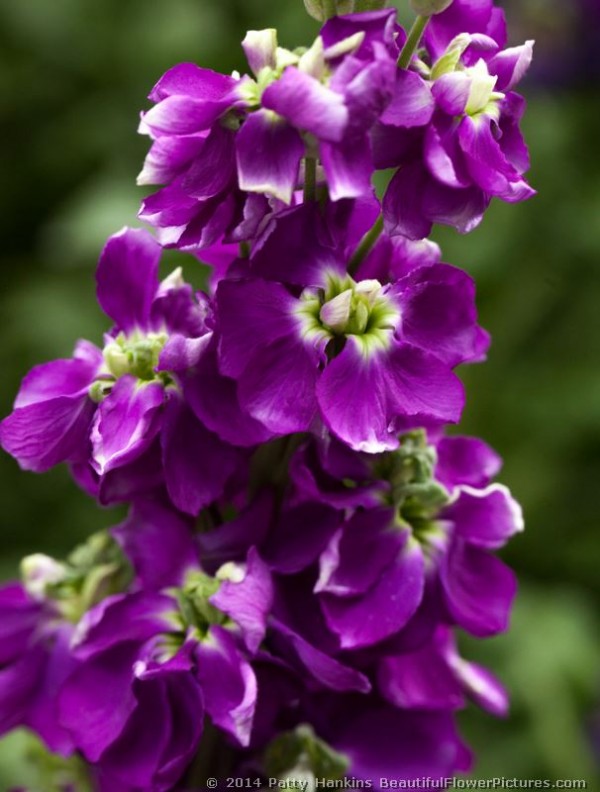
Opera Debora Stock © 2014 Patty Hankins
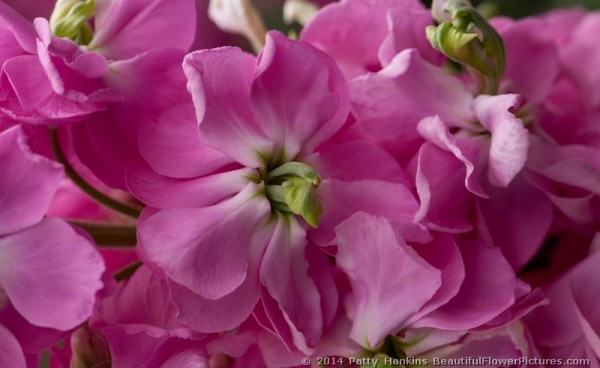
Katz Pink Stock © 2014 Patty Hankins
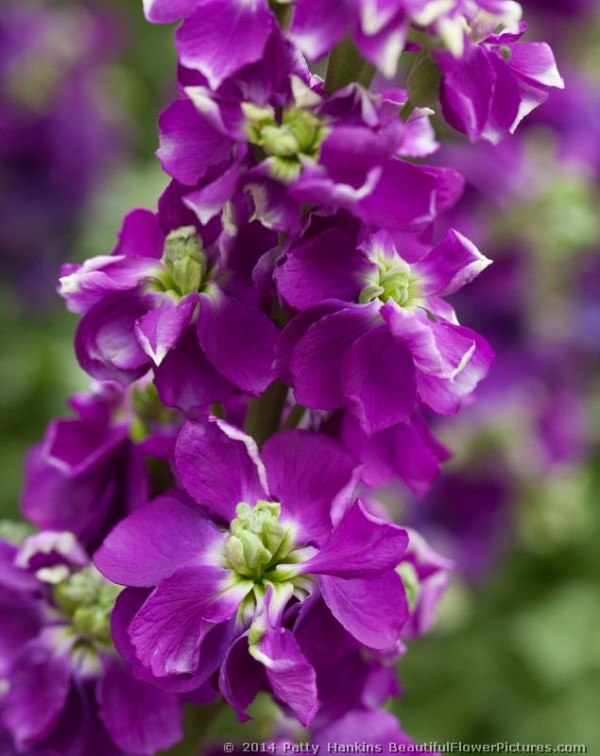
Opera Debora Stock © 2014 Patty Hankins

Katz Bright Rose Stock © 2014 Patty Hankins
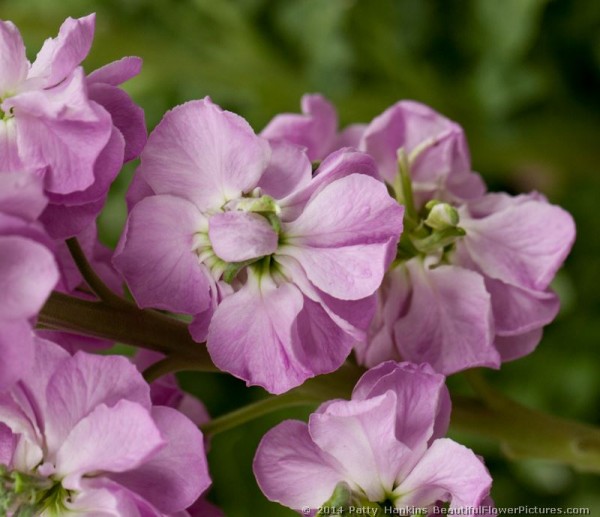
Figaro Light Rose Stock © 2014 Patty Hankins
by hankinslawrenceimages | May 10, 2011 | Brassicaceae Family, Flowers, Wildflowers
 (c) 2011 Patty Hankins
(c) 2011 Patty Hankins
One of the wildflowers that blooms in early spring in the Washington, DC area is Cut-Leaved Toothwort (most sources refer to it as cardamine concatenata – formerly known as Dentaria laciniata). I’ve seen it blooming as early as mid-March at the National Arboretum in DC. When the cut-leaved toothwort blooms – I know that the other wonderful spring wildflowers will soon be blooming as well.
 (c) 2010 Patty Hankins
(c) 2010 Patty Hankins
A member of the Mustard family (Brassicaceae) are edible. In early spring, used it leaves as an herb. The leaves were often cooked in bacon grease or soaked in vinegar. In the fall, the roots were used to add a peppery flavor to food.
 (c) 2011 Patty Hankins
(c) 2011 Patty Hankins
It was also used medicinally by Native Americans. It was used for everything from headaches to colds to heart disease. If men put it in their pocket, it could supposedly be used to attract women. Ceremonially, toothwort was used for divination. There are also reports of its use as a hallucinogen – where is supposedly could help mesmerize a person. Under the Doctrine of Signtaures, toothwort was useful for treating tooth problems.
 (c) 2011 Patty Hankins
(c) 2011 Patty Hankins
Cut-Leaved Toothwort is easy to identify once you know what it looks like. It grows to between 6 and 12 inches tall. The single stem is topped with a cluster of four petaled white or pink blossoms. The leaves are whorled with three toothed leaves on the upper part of the stem.
 (c) 2011 Patty Hankins
(c) 2011 Patty Hankins
Cut-Leaved Toothwort is native in the United States and Canada. It is found from the east coast to as far west as Texas in the south and North Dakota in the north. It prefers to grow in rich moist soils in partial shade.
 (c) 2011 Patty Hankins
(c) 2011 Patty Hankins
I’ve photographed Cut-Leaved Toothwort in several locations in the Washington DC area including the National Arboretum, in the Marsden tract along the C&O canal, at Turkey Run Park, and at McKee Beshers Wildlife Management Area. I’ve also photographed it along the Blue Ridge Parkway in North Carolina and in the Great Smoky Mountains National Park in Tennessee.
 (c) 2011 Patty Hankins
(c) 2011 Patty Hankins
If you’d like more information about Cut-Leaved Toothwort, you can find it on the following websites.
Kemper Center for Home Gardening
Lady Bird Johnson Wildflower Center
Native American Ethnobotony
USDA Plant Profiles
UW-Stevens Point – Robert Freckmann Herbarium















